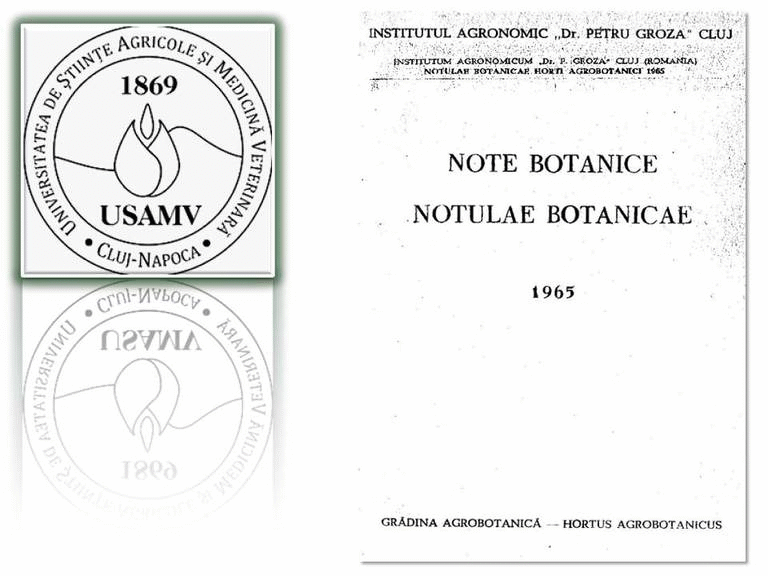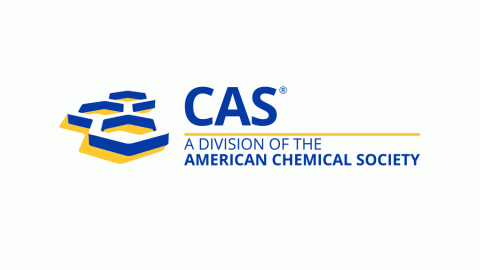Shading Reduced the Injury Caused by Winter Chill on Pitaya Plant
DOI:
https://doi.org/10.15835/nbha47111364Keywords:
antioxidant enzyme; chlorophyll; MDA; proline; ROSAbstract
Pitaya (Hylocereus undatus Britton & Rose) is widely cultivated in subtropical and tropical regions. Pitaya is cold-sensitive; most cultivars are injured during chilling winter periods, especially in subtropical regions. In this study, the effects of shading on the cold tolerance in pitaya plant were investigated. Pitaya plants were grown under full sunlight (control) or a shading net with a light blocking rate of about 60%. Morphological and physiological performance of the overwintering pitaya plants were compared between the control and the shaded treatment. The results showed that shading treatment markedly reduced the chilling induced tissue necrosis. Contents of chlorophyll a, chlorophyll b, and total chlorophylls (chlorophyll a+b), the chlorophyll a/b ratio, Fm and Fv/Fm were all higher in shading treatment than those in the control. Meanwhile, proline content and ascorbic acid peroxidase (APX) activity in the shading treatment were significantly increased, while malondialdehyde (MDA), the superoxide anion (O2.-) and hydrogen peroxide (H2O2) levels were significantly decreased by shading treatment. The results indicated that damage caused by chilling stress on pitaya was, at least partially, light-dependent; and in practical production, shading treatment can be used to reduce chilling injury in pitaya.
References
Ashraf M, Ali Q (2008). Relative membrane permeability and activities of some antioxidant enzymes as the key determinants of salt tolerance in canola (Brassica napus L.). Environmental and Experimental Botany 63:266-273.
Bates L, Waldren R, Teare I (1973). Rapid determination of free proline for water-stress studies. Plant Soil 39:205-207.
Zheng BS (2006). Modern Plant Physiology and Biochemistry Research Technology, China Meteorological Press.
Cavatte PC, Martins SCV, Morais LE, Silva PEM, DaMatta FM (2012). The physiology of abiotic stresses. Plant Breeding for Abiotic Stress Tolerance. Springer-Verlag, Berlin Heidelberg, pp 21-51.
Deng RJ, Fan JX, Cai YQ (2011). Present research status and industrial development of pitaya at home and abroad. Guizhou Agricultural Sciences 39(6):188-192.
Deng RJ, Fan JX, Wang YQ, Jin JF, Liu T (2014). Semilethal temperature of Pitaya under low temperature stress and evaluation on their cold resistance. Zhiwu Shengli Xuebao (Plant Physiology Journal) 50(11):1742-1748.
Duan W, Li XG, Meng QW, Zhao SJ (2003). Photoinhibiton mechanisms of plant under low temperature. Acta Botanica Boreali-Occidentalia Sinica 23(6):1017-1023.
Evans JR, Poorter H (2010). Photosynthetic acclimation of plants to growth irradiance: the relative importance of specific leaf area and nitrogen partitioning in maximizing carbon gain. Plant Cell and Environment 24(8):755-767.
Ge TD, Sui FG, Bai LP, Lu YY, Zhou GS (2006). Effects of water stress on the protective enzyme activities and lipid peroxidation in roots and leaves of summer maize. Agricultural Sciences in China 5(4):291-298.
Hashempour A, Ghasemnezhad M, Ghazvini RF, Sohani MM (2014). Olive (Olea europaea L.) freezing tolerance related to antioxidant enzymes activity during cold acclimation and non-acclimation. Acta Physiologiae Plantarum 36(12):3231-3241.
Hughes NM, Burkey KO, Cavender-Bares J, Smith WK (2012). Xanthophyll cycle pigment and antioxidant profiles of winter-red (anthocyanic) and winter-green (acyanic) angiosperm evergreen species. Journal of Experimental Botany 63:1895-1905.
Jiménez A, Hernandez JA, Del Río LA, Sevilla F (1997). Evidence for the presence of the ascorbate-glutathione cycle in mitochondria and peroxisomes of pea leaves. Plant Physiology 114:275-284.
Karabal E, Yucel M, Oktem HA (2003). Antioxidant responses of tolerant and sensitive barley cultivars to boron toxicity. Plant Science 164:925-933.
Li HW, Dong J, Wollenweber B, Dai TB, Cao WX (2010). Effects of shading on morphology, physiology and grain yield of winter wheat. European Journal of Agronomy 33(4):267-275.
Mishra NP, Fatma T, Singhal GS (2010). Development of antioxidative defense system of wheat seedlings in response to high light. Physiologia Plantarum 95(1):77-82.
Monneveux P, Pastenes C, Reynolds MP (2003). Limitations to photosynthesis under light and heat stress in three high-yielding wheat genotypes. Journal of Plant Physiology 160:657-666.
Mu H, Jiang D, Wollenweber B, Dai T, Jing Q, Cao W (2010). Long-term low radiation decreases leaf photosynthesis, photochemical efficiency and grain yield in winter wheat. Journal of Agronomy and Crop Science 196:38-47.
Nobel PS, Barrera EDL (2002). Stem water relations and net CO2, uptake for a hemiepiphytic cactus during short-term drought. Environmental and Experimental Botany 48(2):129-137.
Osmond CB (1994). What is photoinhibition? Some insights from comparisons of shade and sun plants. In: Baker NR, Bowyer JR (Eds). Photoinhibition of photosynthesis: molecular mechanisms to the field. Bios Scientific, Oxford pp 1-24.
Robakowski P (2005). Susceptibility to low-temperature photoinhibition in three conifers differing in successional status. Tree Physiology 25(9):1151-1160.
Schöner S, Heinrich KG (1990). Protective systems against active oxygen species in spinach: response to cold acclimation in excess light. Planta 180(3):383-389.
Shaver JM, Oldenburg DJ, Bendich AJ (2008). The structure of chloroplast DNA molecules and the effects of light on the amount of chloroplast DNA during development in Medicago truncatula. Plant Physiology 146(3):1064-1074.
Shi H, Ye T, Chan Z (2014). Nitric oxide-activated hydrogen sulfide is essential for cadmium stress response in bermudagrass (Cynodon dactylon (L). Pers.). Plant Physiology and Biochemistry 74(136):99-107.
Shi H, Ye T, Chan Z (2013). Exogenous application of hydrogen sulfide donor sodium hydrosulfide enhanced multiple abiotic stress tolerance in bermudagrass (Cynodon dactylon (L). Pers.). Plant Physiology and Biochemistry 71:226-234.
Soitamo AJ, Piippo M, Allahverdiyeva Y, Battchikova N, Aro EM (2008). Light has a specific role in modulating Arabidopsis gene expression at low temperature. BMC Plant Biology 8:13.
Sun DZ, Han XR, Peng J, Fan F (2016). The effect of exogenous salicylic acid on PSII photochemical efficiency and distribution and utilization of luminous energy in tomato seedlings. Acta Horticulturae Sinica 43(8):1482-1492.
Verhoeven A (2014). Sustained energy dissipation in winter evergreens. New Phytologist 201:57-65.
Wang B, Zheng W (2004). The development prospect of dragon fruit in the south subtropical region of Guizhou. Fujian Fruits 1(128):36-38.
Wang X, Xiang QY, Tan W, Cai YQ, Fan JX, Deng RJ (2011). The climatic division of pitaya in Guizhou province based on RS and GIS. Guizhou Agricultural Sciences 39(3):229-233.
Wang YR, Liu HX, Li P, Zeng SX, Zhen LP, Guo JY (1986). Effects of low temperature on membrane lipid peroxidation in photosynthetic organs of rice seedlings under light and dark conditions. Plant Physiology Communications 12(3):244-251.
Wutipraditkul N, Wongwean P, Buaboocha T (2015). Alleviation of salt-induced oxidative stress in rice seedlings by proline and/or glycinebetaine. Biologia Plantarum 59(3):547-553.
Xu C, Yin YP, Cai R, Wang P, Ni YL, Guo JX, Chen EY, Cui ZY, Liu T, Yang DQ, Wang ZL (2013). Responses of photosynthetic characteristics and antioxidative metabolism in winter wheat to post-anthesis shading. Photosynthetica 51(1):139-150.
Xu Y, Chen FD (2008). Cold semi lethal temperature and cold adaptability of 8 species of chrysanthemum. Journal of Horticulture 35(4):559-564.
Yang SH, Wang LJ, Li SH, Duan W, Loescher W, Liang ZC (2007). The effects of UV-B radiation on photosynthesis in relation to photosystem II photochemistry, thermal dissipation and antioxidant defenses in winter wheat (Triticum aestivum L.) seedlings at different growth temperatures. Functional Plant Biology 34:907-917.
Zushi K, Matsuzoe N, Kitano M (2009). Developmental and tissue specific changes in oxidative parameters and antioxidant systems in tomato fruits grown under salt stress. Scientia Horticulturae 122(3):362-368.
Downloads
Published
How to Cite
Issue
Section
License
Copyright (c) 2018 Li WANG, Xue ZHANG, Weili CHEN, Tujian XIAO, Xiaozhen ZHAO, Yuhua MA, Xuming HUANG

This work is licensed under a Creative Commons Attribution 4.0 International License.
License:

Open Access Journal:
The journal allows the author(s) to retain publishing rights without restriction. Users are allowed to read, download, copy, distribute, print, search, or link to the full texts of the articles, or use them for any other lawful purpose, without asking prior permission from the publisher or the author.











.png)







